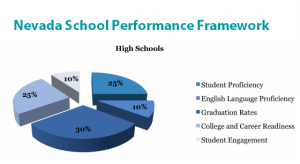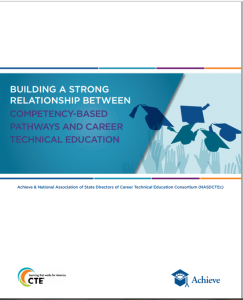The 2018 legislative session is heating up and, as is tradition in many states, Governors have kicked off the season by laying out their policy agendas in their annual addressed to their state legislatures. Last year, career readiness emerged as a top priority for most states, with 24 governors elevating Career Technical Education (CTE) and workforce training in their speeches. Already, it looks like that trend will continue in 2018.
In Idaho, Governor Butch Otter celebrated the work of his higher education and workforce development task forces, which were both authorized by executive order early last year, and committed to implementing their recommendations. These include hiring an executive officer for higher education, expanding capacity at postsecondary technical schools, incentivizing high school CTE programs, and expanding CTE offerings to 7th and 8th grade.
Meanwhile, Governor Eric Holcomb laid out an agenda for CTE in his address to the Indiana state legislature earlier this week. In December, the State Board of Education adopted new pathways to graduation that elevate the role of work-based learning and CTE in high school pathways. In his address, Gov. Holcomb celebrated this decision and committed to making the high school diploma even more meaningful by developing K-12 computer science standards, investing in professional development for teachers, and establishing a state work-based learning and apprenticeship office with the goal of doubling the number of work-based learning opportunities in the state by 2019.
In other states, governors committed to expanding tuition-free college, investing in work-based learning opportunities, and supporting programs like Jobs for America’s Graduates that connect at-risk youth with education and training opportunities. While only a handful of states have held their 2018 state of state events already, more than half of these speeches are scheduled to take place in January.
New Money for High-demand CTE Programs
After a busy 2017, states are turning to the work of executing new policies and programs. In last year’s session, the Indiana legislature outlined a revised CTE funding formula to better align resources with workforce demand. Under the tiered funding structure, programs receive more money if they are in demand and lead to high wages. The new funding formula will not go into effect until July, but programs are already seeing changes to their designations and are anticipating funding shifts.
In Michigan, new funding for CTE will soon make landfall through a $5 million competitive grant initiative. The initiative was authorized in November by the legislature and is part of a $12.5 million appropriation for CTE equipment upgrades. Grants will be awarded to school districts in partnership with institutions of higher education and are designed to strengthen high-quality career pathways in high-demand, high-wage fields.
Register for Upcoming Advance CTE Webinars
Finally, Advance CTE has a few webinars on the schedule related to state CTE policy:
(January 17, 3:00pm ET) Leveraging ESSA’s Momentum to Advance Career Readiness: This webinar will share the findings from Advance CTE and Education Strategy Group’s full analysis of ESSA state plans and explore trends across all states. Participants will also hear from state leaders in South Dakota and Rhode Island who are using their ESSA plans to build and capitalize on momentum around career readiness. Participants can register here.
(January 31, 2:00pm ET) State Policies Impacting CTE: 2017 Year in Review: Join Advance CTE and the Association for Career and Technical Education to unpack findings from the “State Policies Impacting CTE: 2017 Year in Review” report. The webinar will explore recent trends in state CTE policy and examine how the CTE policy landscape has changed over the past few years. Participants can register here.
Austin Estes, Policy Associate


 Putting Learner Success First: A Shared Vision for the Future of CTE
Putting Learner Success First: A Shared Vision for the Future of CTE Eighteen states
Eighteen states 